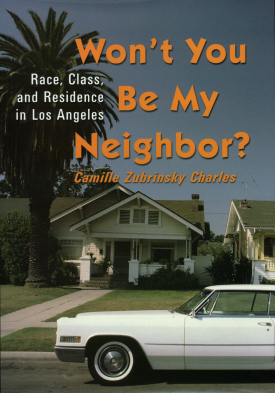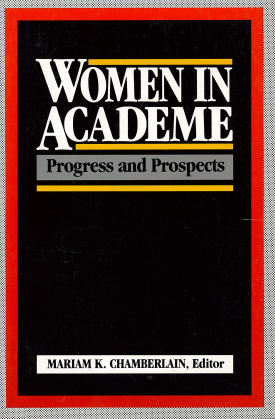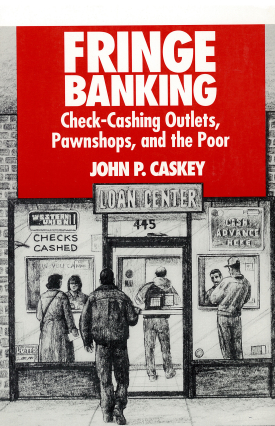
Won't You Be My Neighbor?
About This Book
Los Angeles is a city of delicate racial and ethnic balance. As evidenced by the 1965 Watts violence, the 1992 Rodney King riots, and this year’s award-winning film Crash, the city’s myriad racial groups coexist uneasily together, often on the brink of confrontation. In fact, Los Angeles is highly segregated, with racial and ethnic groups clustered in homogeneous neighborhoods. These residential groupings have profound effects on the economic well-being and quality of life of residents, dictating which jobs they can access, which social networks they can tap in to, and which schools they attend. In Won’t You Be My Neighbor?, sociologist Camille Zubrinsky Charles explores how modern racial attitudes shape and are shaped by the places in which people live.
Using in-depth survey data and information from focus groups with members of L.A.’s largest racial and ethnic groups, Won’t You Be My Neighbor? explores why Los Angeles remains a segregated city. Charles finds that people of all backgrounds prefer both racial integration and a critical mass of same-race neighbors. When asked to reveal their preferred level of racial integration, people of all races show a clear and consistent order of preference, with whites considered the most highly desired neighbors and blacks the least desirable. This is even true among recent immigrants who have little experience with American race relations. Charles finds that these preferences, which are driven primarily by racial prejudice and minority-group fears of white hostility, taken together with financial considerations, strongly affect people’s decisions about where they live. Still, Charles offers reasons for optimism: over time and with increased exposure to other racial and ethnic groups, people show an increased willingness to live with neighbors of other races.
In a racially and ethnically diverse city, segregated neighborhoods can foster distrust, reinforce stereotypes, and agitate inter-group tensions. Won’t You Be My Neighbor? zeroes in on segregated neighborhoods to provide a compelling examination of the way contemporary racial attitudes shape, and are shaped by, the places where we live.
CAMILLE ZUBRINSKY CHARLES is associate professor of sociology and faculty associate director of the Center for Africana Studies at the University of Pennsylvania.
RSF Journal
View Book Series
Sign Up For Our Mailing List
Apply For Funding

Women in Academe
About This Book
The role of women in higher education, as in many other settings, has undergone dramatic changes during the past two decades. This significant period of progress and transition is definitively assessed in the landmark volume, Women in Academe.
Crowded out by returning veterans and pressed by social expectations to marry early and raise children, women in the 1940s and 1950s lost many of the educational gains they had made in previous decades. In the 1960s women began to catch up, and by the 1970s women were taking rapid strides in academic life. As documented in this comprehensive study, the combined impact of the women’s movement and increased legislative attention to issues of equality enabled women to make significant advances as students and, to a lesser extent, in teaching and academic administration. Women in Academe traces the phenomenal growth of women’s studies programs, the notable gains of women in non-traditional fields, the emergence of campus women’s centers and research institutes, and the increasing presence of minority and re-entry women. Also examined are the uncertain future of women’s colleges and the disappointingly slow movement of women into faculty and administrative positions.
This authoritative volume provides more current and extensive data on its subject than any other study now available. Clearly and objectively, it tells an impressive story of progress achieved—and of important work still to be done.
MARIAM K. CHAMBERLAIN is founding president of the National Council for Research on Women.
CONTRIBUTORS: Helen S. Astin, Jean W. Campbell, Mary Ellen S. Capek, Maren Lockwood Carden, Mariam K. Chamberlain, Carol Frances, Jane Gould, Lilli S. Hornig, Florence Howe, Marjorie Lightman, Virginia Davis Nordin, Patricia Ann Palmieri, Bernice R. Sandler, Cynthia Secor, Donna Shavlik, Margaret C. Simms.
RSF Journal
View Book Series
Sign Up For Our Mailing List
Apply For Funding

Fringe Banking
About This Book
"Cogently argued, fills an important gap in the literature, and is accessible to undergraduates." —Choice
"Dismantles the mythology surrounding pawnshops and check-cashing outlets, and demonstrates that they are no longer on the fringe of our financial system but integral to it."—San Francisco Bay Guardian
In today's world of electronic cash transfers, automated teller machines, and credit cards, the image of the musty, junk-laden pawnshop seems a relic of the past. But it is not. The 1980s witnessed a tremendous boom in pawnbroking. There are now more pawnshops thanever before in U.S. history, and they are found not only in large cities but in towns and suburbs throughout the nation. As John Caskey demonstrates in Fringe Banking, the increased public patronage of both pawnshops and commercial check-cashing outlets signals the growing number of American households now living on a cash-only basis, with no connection to any mainstream credit facilities or banking services.
Fringe Banking is the first comprehensive study of pawnshops and check-cashing outlets, profiling their operations, customers, and recent growth from family-owned shops to such successful outlet chains as Cash American and ACE America's Cash Express. It explains why, despite interest rates and fees substantially higher than those of banks, their use has so dramatically increased. According to Caskey, declining family earnings, changing family structures, a growing immigrant population, and lack of household budgeting skills has greatly reduced the demand for bank deposit services among millions of Americans. In addition, banks responded to 1980s regulatory changes by increasing fees on deposit accounts with small balances and closing branches in many poor urban areas.
These factors combined to leave many low- and moderate-income families without access to checking privileges, credit services, and bank loans. Pawnshops and check-cashing outlets provide such families with essential financial services thay cannot obtain elsewhere. Caskey notes that fringe banks, particularly check-cashing outlets, are also utilized by families who could participate in the formal banking system, but are willing to pay more for convenience and quick access to cash. Caskey argues that, contrary to their historical reputation as predators milking the poor and desperate, pawnshops and check-cashing outlets play a key financial role for disadvantaged groups. Citing the inconsistent and often unenforced state laws currently governing the industry, Fringe Banking challenges policy makers to design regulations that will allow fringe banks to remain profitable without exploiting the customers who depend on them.
JOHN P. CASKEY is associate professor of economics at Swarthmore College.
